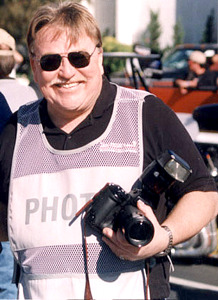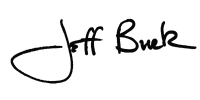
|
|||||||||||||||||||||||||||||||||||||||||||||||||||

Those who don't learn from history are doomed to repeat it. I can't remember who said that, but he knew of what he spoke and I think he could have been talking about the future of Pro Modified.
I've been observing and reporting on really fast doorslammers since the early Eighties and the nitrous oxide-injected AHRA Pro Stockers. Over the two-plus decades that really fast doorslammers have been evolving there are two absolutes relating to the classes that have remained: 1) The cars keep getting quicker and faster regardless of rule changes and 2) It keeps getting more expensive to build and race Pro Mod style 'slammers despite rules designed to control cost. Historically all professional auto racing classes have and continue to have those inherent problems.
The day that IHRA's Ted Jones allowed Top Sportsman racers to enter a class called Pro Modified the die was cast. Like all professional classes, Pro Modified became one where the number of "Benjamins" the racer had to spend on his car became as important if not more important than how proficient the driver/tuner/ engine builder was.
When Top Sportsman morphed into Pro Modified in the early nineties, a few racers with limited budgets, small trailers and few if any spares still were able to compete. Tim McAmis, with the help of engine builder and former AHRA Pro Stock racer Matt Johnson won the first Pro Mod World Championship on a very limited budget. After that, big trucks, bigger trailers and big budgets became required to be a serious player in the class, and many of the pioneers of Pro Modified were soon pushed out. The class changed from being a "run-what-ya-brung" class for part time racers who built their own cars, tuned and built their own engines and paid the bills out of their own wallet to one where at least some sponsorship was mandatory. They call that progress.
For the last ten years or so, though, the class has remained relatively stable. Single car teams were the rule not the exception and, despite what some racers would have you believe, both supercharged cars and nitrous oxide cars both won their fair share of races.
Until recently there hasn't been enough money or prestige connected with the Pro Modified to class to attract the kind of racers and budgets that are the norm in many other professional classes. You know the kind of teams I'm talking about: multiple cars, crew chiefs, and in house engine programs. In other words, seven- figure budget teams with owners who will spend literally whatever is required to win a championship.
Not anymore. After virtually ignoring the class for ten years, NHRA suddenly realized in 2001 that Pro Modified is the brightest new star on the drag racing horizon and put together a five-race exhibition schedule, including an appearance at the most prestigious race in drag racing, the U.S. Nationals. With the recent signing of AMS as the series sponsor, the NHRA exhibition schedule being increased to ten races, and the perception that Pro Modified will soon be a professional NHRA category, the cost of participating at the highest levels of Pro Modified is going to take a quantum leap.
It is already evident that the really serious teams are going to have the option on race day of taking either a supercharged engine powered car or a nitrous oxide injected car out of the trailer, depending on which combination they feel would have a performance advantage based on the track and weather conditions. The single car, moderately financed teams that in the past could take some comfort in knowing that at certain times during a year they might have an advantage over the big budget single-car teams won't be able to any more.
In the future, being really competitive in Pro Modified will probably require a $500,000 to $1,000,000 investment. There won't just be two-car teams but teams with multiple cars and engine combinations. Can you say John Force? That is insanity, especially when you consider that currently Pro Modified pays a $1,000 to qualify and less that $10,000 to win.
My friend Bob Rieger is probably the poster boy for the next generation of Pro Modified team owners/racers. He is the average racer's worst nightmare. He is absolutely driven to succeed, is a very talented driver, and has basically an unlimited budget. He won multiple World Championships in Pro Street racing because every time the sanctioning body made rules designed to slow him down, he just had a new car and engine combination built to fit the new rules and kept on winning races. There is no reason to believe he won't do the same thing in Pro Mod.
Attention Mike Baker: changing the rules won't slow this guy down. Rieger's new Hemi-powered, McAmis-built '57 has more laps on it just testing than many Pro Mod racers put on a car in a full season of competition. He has already gone 6.18 with the car and isn't through testing. He will force teams like those of the Stott Brothers, Mike Ashley, Paul Trussel, and other well-financed teams to spend and test like they never have before just to keep pace.
The participants in that class are heading down the same bad road that was trail blazed by Top Fuel, Funny Car and Pro Stock before them. Five or six teams will have a legitimate chance to win on race day. The rest are just going to be there to fill out the field and collect their qualifying money. I don't know what the solution is. Maybe they should make Pro Mod a $100,000 claimer class?
For spectators and journalists the class is going to be a joy to watch and report on. Twenty to 24 cars trying to qualifying for the eight-car NHRA field is going to highly entertaining and, c'mon, how about a five-second door slammer! On the other hand, I'm not sure that the majority of Pro Mod drivers and owners are going have as much fun as the spectators, but then they are the one's who wanted a Professional class.
Which reminds me of another old saying, "Be careful what you wish for, you might get it." Got it?
 |
photo by James Drew
Copyright 1999-2002, Drag Racing Online and Racing Net Source





